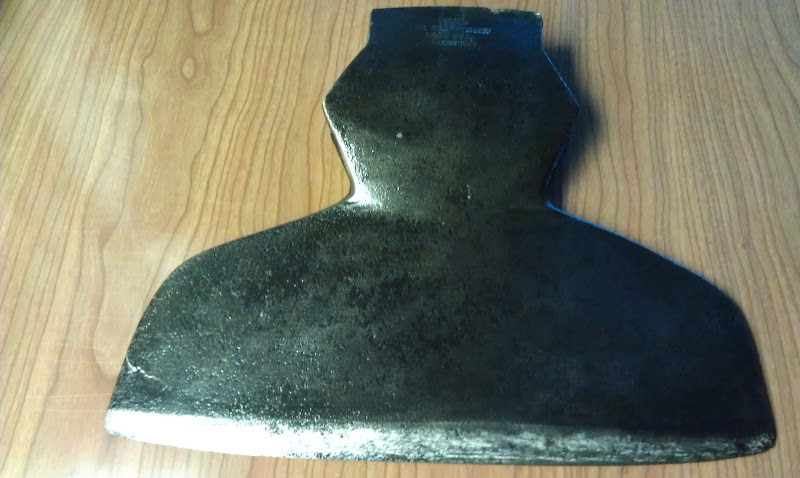Square_peg
Gold Member
- Joined
- Feb 1, 2012
- Messages
- 13,853
Hey Pegs, that looks phenomenal!! Top notch work there.
Want to make one for me????!

Wow! That head is in dang good shape. It deserves to be rehung.
The BladeForums.com 2024 Traditional Knife is available! Price is $250 ea (shipped within CONUS).
Order here: https://www.bladeforums.com/help/2024-traditional/
Hey Pegs, that looks phenomenal!! Top notch work there.
Want to make one for me????!

Green Maple will warp like hell if you leave it leaning. Once its dry its fairly stable. I bet you rig up a clamp and make a sweet double offset handle so it'd lay parralel to the plane of the cutting edge.
Hey Pegs, any updates on this? Have you used it? How does it feel? How do you like the offset? Etc......
I'm feeling inspired to carve up a handle for my broad axe.
I finally wedged this thing today and I'm calling it done. I've enjoyed the challenge and I'm please with the result. It's not perfect but it will do. After hanging I gave it 2 coats of BLO mixed with mineral spirits for deeper penetration.
I stole a page out of Humppa's book and used a 3-piece wedge.

I think the curve in the haft is just about right for me.



I hope that I will soon take it to task.
Square peg, where can I find info on how to do this three piece wedge?
Right here. What do you want to know?
I kerf the haft both ways and then drive in the cross-wedge first. Then I drive in the two pieces of the main wedge. A fellow forum member does it the opposite way, he drives the main wedge first then starts a split in it with a chisel and drives the cross-wedge. Eitehr way seems to accomplish the same thing.
On a side note, I bought www.axerestoration.com because it was available shockingly, I wont have time to build the site for a while and view it as a long project ...
the handle I bought from Hickory House doesnt have a kerf, the first one I ever bought that didn't, what saw/cut thickness do you recommend for the cuts? And how far should you cut down?
On a side note, I bought www.axerestoration.com because it was available shockingly, I wont have time to build the site for a while and view it as a long project, but would you be interested in being a contributor somewhere down the line, I don't have the knowledge but I can build a site and there's not much out there now.
One of the other handle makers here used to drill a small hole thru the haft as a stopping point for the cross kerf - the idea being to prevent the kerf from splitting down thru the eye. I thought that was overkill until I had cross kerf split just like that recently. I'll be drilling my next one.
I wonder if broad axe handles come without a kerf because some users don't wedge them at all? So that they can switch hands easily if needed.
I would prefer than no factory handles, for anything, have pre-cut kerfs only because that bandsaw slit is often careless, angled, and off-center!I wonder if broad axe handles come without a kerf because some users don't wedge them at all? So that they can switch hands easily if needed.
Thanks, this is going to be a gift for someone else who I didn't think could tackle a removable wedge.
...I've never seen a Plumb 'take-up wedge' but suspect these revolved around an adjustable cone-shaped wedge with a screw in the middle too.
If it's going to be a gift to someone then why disguise this, what obviously is already old and worn, by superficially colouring the metal? Easier would be to give it a coat of automotive paint and then lightly expose the cutting edge with sandpaper and clearcoat. Then it could cheerfully hang on the wall for quite a long time (1000 years) before succumbing to rust!
Using this method, what coloring of paint do you normally use? I do like the clean metal look, I was concerned about rusting though.
